


Swing dancing�.the very name evokes a feeling. Whether you call it Rock n� Roll, Bop, Disco, Pop, West Coast, East Coast, Swing, Jive, Lindy, Shag, or Hand Dance��it�s two people dancing together, as partners, in each other�s arms.
My father learned to swing dance during World War II, and he taught me. I stood on his feet to learn the steps. There were dance classes at my school, and at the community center � first with Elvis, then Chuck Berry, Little Richard, Temptations, and finally the Beatles playing in the background.
Then in the late 70�s, and almost overnight, an integration of styles and sounds began to come together. From the moment John Travolta strutted down a Brooklyn street to �Stayin' Alive� in 1977, a once-underground music movement turned into a mainstream pop phenomenon. It is estimated that over 47 million people danced regularly in over 35,000 adult night clubs in the US. By early 1979, more than 80% of the top 40 chart hits and over 500 radio stations were known as Disco.
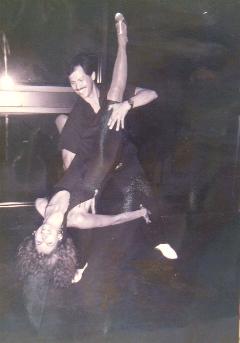
St. Louis dancers never stopped swing dancing - they just adjusted their style over the years to the latest popular music. When the Fever hit, thousands of experienced St. Louis couple dancers taught excited newcomers, then danced with them in local clubs to disco sounds (�Turn the Beat Around�) and to bands like Billy Peak or Jules Blattner who played the more traditional sounds of rock �n roll or rhythm & blues.
In the fall of 1977, dancers from all over the country, including Tulsa, Dallas, Las Vegas, Phoenix, and Los Angeles attended a national Swing competition in St. Louis. Midwest dancers saw West Coast Swing (also called �slot style�, Whip, Push and Tulsa Swing) for the first time and West Coast Swing dancers saw the circular Imperial/Lindy style. Swing dancing across the country was irrevocably changed as dancers were forced to blend their styles when they asked a stranger to dance. The US Open Swing Dance Championship, begun in 1977, is still held every Thanksgiving weekend in Los Angeles.
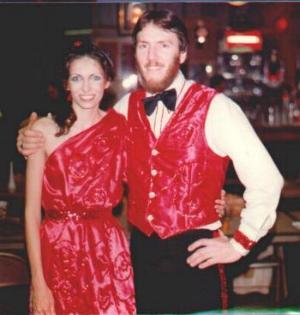
Like most of the country from 1978 to 1983, there were weekly dance competitions in all the major St. Louis discos. You could swing dance across the city every night of the week in such well-known clubs as Stash�s, Contempos, The Hanger, Stingers, 94th Aero Squadron, Coco�s, Mali Kai, Talaynas, the classic Casa Loma Ballroom and the inimitable, unbeatable 5000 square foot lighted dance floor of OZ. Dozens of well-known swing-dance couples could be found every night vying for a trophy or cash prize at one of the venues. Six weeks of semi-finals led up to the finals which showcased astonishing skills among the self-taught dancers.
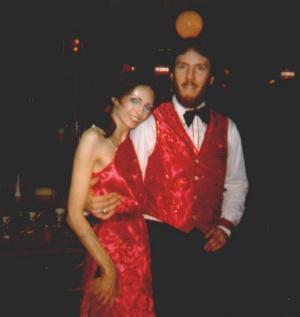
In 1979, two hundred St. Louis dancers journeyed en masse to Tulsa, Oklahoma to the Southwest Regional Dance Competition. There were rules, judges, an emcee, choreographed routines to your own music and costumes (boy were there costumes).
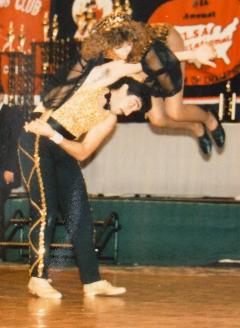
A five state dance competition was born that weekend which spawned regional and national level contests showcasing competitors with an ever-increasing level of dance skills. Some competitions drew over 1000 dancing spectators for a single night of dancing, and more than one couple from the swing community represented their city on �Dance Fever� and �Star Search�. You saw one such couple win the dance competition on the new �Star Search� held last year on Fox.
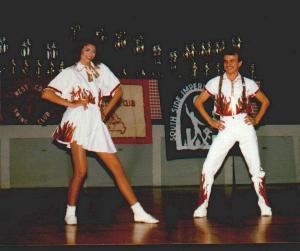
My first competition partner�s name was Ben (yes, THE Ben). We learned our first aerial at that national competition in 1977. There have been other partners, but I�ll always remember those early years � in part for the extraordinary comraderie shared by the competitors and for the support of the dance community. I still dance, occasionally teach, and sometimes judge, but it�s never been quite the same.
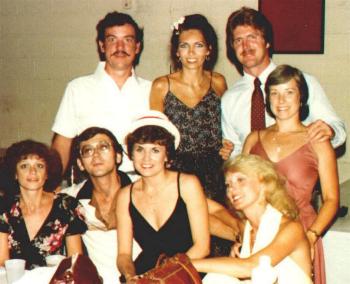
Swing dancing remains the only original American art form and is as popular today as it was during World War II, thanks in part to the involvement of the hundreds of thousands of dancers, thousands of volunteers, and hundreds of dance teachers from across the country. In 1980 it was suggested that this art form didn�t come to a standstill with any one dance style or type of music, but that it had always, and will always, continue to be an evolutionary process. Twenty five years later I can say, with utter certainty, that I was right!!
 |
| Get Your Own Map | View Larger Map |